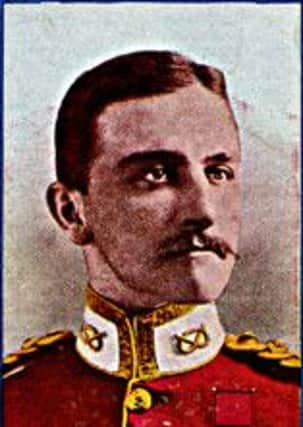Bravery of local war hero


The town war memorial on The Parade bears the name of one of these brave men, Arthur Kilby VC, the only one of the local recipients to lose his life in the action for which the award was made.
The Leamington History Group has carried out research into his life. Arthur Forbes Gordon Kilby was born in Cheltenham on February 3 1885, the son of a member of the Bengal Customs Service. Two of Arthur’s paternal ancestors were Lord Mayors of the city of York. Kilby’s parents moved to Skelton House in Lillington Avenue, Leamington, and were living there at the time of their son’s death.
Advertisement
Hide AdAdvertisement
Hide AdArthur Kilby was educated at Bilton Grange School at Dunchurch and Winchester before embarking on a military career at Sandhurst. He was commissioned into the South Staffordshire Regiment and promoted Captain in 1910 at the age of 25. In the autumn of 1914, the Staffords were in the Ypres sector of the Western Front where Arthur was awarded the Military Cross. Wounded in the right arm and lung by a German bullet, he returned to England for hospital treatment. On his return to the front, he was recommended for the DSO. He rejoined his company in the front line near to Cuinchy south of the La Basée canal on the opening day of the Battle of Loos. This battle was to be the first engagement of the Great War in which the British Army would use poison gas, and unfortunately, when the gas was released at 6am on the morning of September 25 1915, much of it blew back into the Stafford’s front-line trenches. All of the men were affected by it to some degree.
Many were physically incapable of fighting. But, undaunted, Kilby and the remnants of his company began an attack along a narrow canal tow-path in the face of devastating machine-gun fire and a shower of bombs. Within a matter of minutes Arthur Kilby was shot down, his foot blown off. In spite of being mortally wounded, he continued to cheer his men on and fire his rifle.
Kilby’s body was never recovered after the action and he was posted missing, presumed killed. He was recommended for the VC which was presented to his father by the King at Buckingham Palace on 1 July 1916, the day on which the Battle of the Somme began. His body was eventually found 14 years later and interred in Arras Road Cemetery in Roclincourt. There is a fine memorial to him in the Chapel of St Nicholas in York Minster, inscribed with his deeds and containing a bust and the family coat-of-arms. His medals were sold at Spinks in 2012 for £200,000 and are now on display in the Lord Ashcroft collection in the Imperial War Museum.